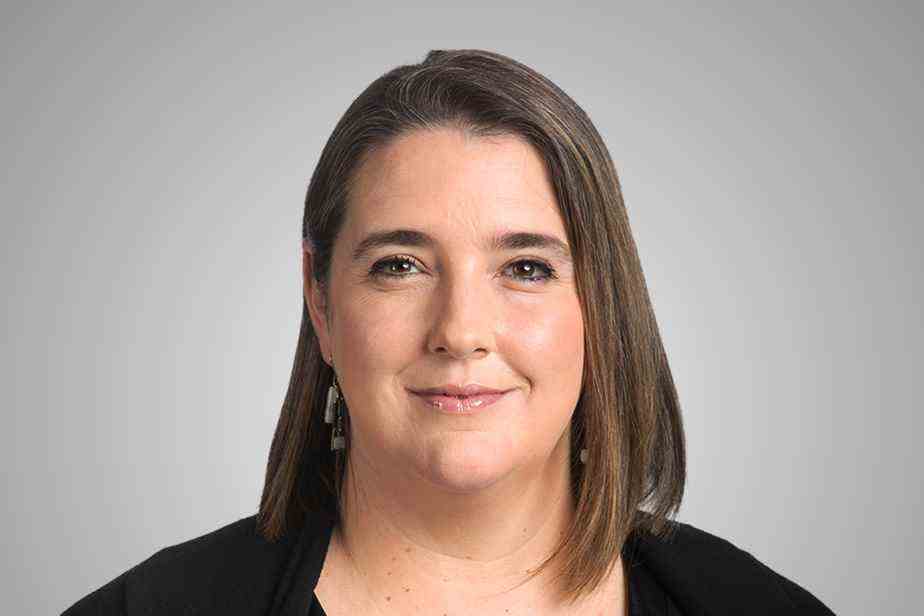Inseparable. This is what Meri Grigoryan, Hasmik Gabrielyan and Anna Bodaveli have become since living in Quebec. But unlike the birds of the same name, they are three. Three women.
In their country of origin, Armenia for the first two and Georgia for the third, they were acquaintances. Meri and Hasmik studied together in Yerevan. Anna’s husband was a friend of Hasmik’s.
Transplanted on Laval soil in turn over the past decade, they have become much more than friends. They are the three sisters of a chosen family. “We do absolutely everything together. We found jobs together, first in a distribution center, then in a daycare. And our three families are always together, around a good meal that we cook together,” Hasmik explains to me as she prepares the dough to shape huge Georgian ravioli, the khinkali.
We are in a small apartment in Laval. A neon-lit ground floor that does not look like much. But I didn’t come to talk about lighting with the three friends, but about their new business: Tiflis Georgian Cuisine, a catering service dedicated to Georgian gastronomy that they set up, as you can imagine, together. .

PHOTO MARCO CAMPANOZZI, THE PRESS
The cooks prepare their dishes in a small apartment in Laval.
It was on Facebook that I learned of the existence of Tiflis, through a photo. There was a dish of satsivi, chicken in a walnut sauce, a magnificent khachapuri, a flatbread stuffed with cheese, as well as baklajani, stuffed eggplant.
-

PHOTO MARCO CAMPANOZZI, THE PRESS
Khinkali, huge Georgian dumplings, are on the menu in Tiflis.
-

PHOTO MARCO CAMPANOZZI, THE PRESS
There are also many other specialties, including khachapuri, a flatbread stuffed with cheese.
1/2
“Real Georgian cuisine in Montreal. At last ! We have it ! “, could we read below the photo from the pen of the novelist Elena Botchorichvilli, Georgian by birth and Montrealer by adoption.
I literally clapped.
My obsession with Georgian cuisine has been going on for 26 years. Since I put my fork in the pkhali (a starter of spinach with walnuts and pomegranate) from a Moscow Georgian restaurant that I had been searching for in the pouring rain for an hour.
In the gray-brown-potato Moscow culinary landscape of the 1990s, Georgian restaurants were oases of greenery, spices, fresh cheese and grilled meats. Islands of human warmth.
At the time, I was living on less than $100 a week, but I always saved some of it for a small Georgian dinner party with friends as broke as me. For $10 or about 60 rubles back then, I ate like a post-Communist queen and drank Khvanchkara, the red wine Stalin served to Churchill and Roosevelt during the Yalta summit.
My interest increased tenfold after my meeting with Quebec geographer Henri Dorion. This great traveler and outstanding storyteller had visited Georgia repeatedly over several decades and brilliantly explained the habits and customs of this mountain country in the Caucasus. The art of toasting and hospitality elevated to the rank of national sport.
I was able to experience this legendary welcome when, in 1998, I was finally able to go to the country of 3.7 million souls, after a long detour via Ukraine and Turkey. Seeing two young Westerners in their twenties arriving at the border of their country at midnight, the Georgian customs officers had organized an unexpected party in our honor. Two traders, met on the bus, offered us accommodation in Tbilisi, the capital. Friends of friends took days off to show us the country.
The scenario was much the same when I visited the country again in 2002 and 2011. Artists, a politician, a doctor and two great-grandsons of Stalin became our guides and our hosts. And at the heart of this human outpouring, there was this exceptional cuisine, extremely rare outside the former USSR.
For a quarter of a century, therefore, I have been constantly looking for a bite of these clever mixtures of nuts, calendula powder and fenugreek of which the Georgians have the secret, bites which have the superpower to bring to the surface whole sections of my life. Whether I am in Moscow, Tbilisi or Laval.
It was Anna who came up with the idea of starting a catering business, but Meri and Hasmik soon followed suit. After all, they already spent whole days cooking these Caucasian specialties as a trio, why not make a living out of it?
They found this small place in a residential building in Laval, obtained certification from the Ministry of Agriculture, Fisheries and Food (MAPAQ) and put a menu on Facebook. Hasmik’s father, who comes six months a year from the Caucasus, brought the precious spices they needed.
Word of mouth did the rest. “It’s mainly people from the former USSR – from Russia, from the Caucasus – who are contacting us at the moment,” explains Hasmik, while teaching me how to make mushroom khinkali.
They don’t want to stop there. After the holidays, which they were planning to spend together in a large chalet, they will look for a local in Montreal to open a restaurant. To make Quebec society discover this gastronomy for which I had to travel for a long time.
It is of these three that I think every time Premier François Legault repeats that he wishes to welcome 100% French-speaking qualified immigration. In such an eventuality, a Meri, a Hasmik and an Anna – who learned French after their immigration – could not come to settle in Quebec with husbands, children, cultural background and desire to undertake. The world of possibilities, which is one of Greater Montreal’s main attractions, would only be narrowed.
Our recipe for collective happiness is missing a rare ingredient.
